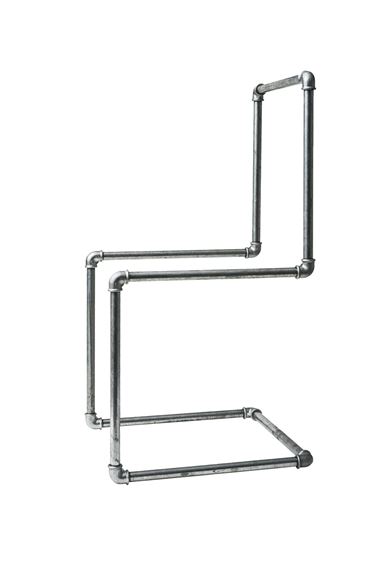the early years. mart stam, the institute and the industrial design collection
The Exhibition "the early years. mart stam, the institute and the industrial design collection" is devoted to the emergent phase of East German industrial design culture, and in particular to the Dutch architect Mart Stam’s advocacy of a thoroughgoing modernization of the product world.
The Institute of Industrial Design, founded by Stam in 1950 at the College of Applied Arts in the eastern borough of WeiГџensee, Berlin, had a lasting influence on East German product design. The Institute was dedicated to the design principles of function, industrial manufacturing, and high quality.
Around 1950, in a time of post-war economic scarcity, a variety of design intentions, product forms, and stages of development existed side by side in the German Democratic Republic. Mart Stam and his circle promoted approaches based on the functionalist tradition whose clarity speaks for itself.
Mart Stam’s brief but influential engagement at the design institute was ill- fated: as a proponent of modern design in the Bauhaus tradition, Stam was soon accused of “formalism” by the Party-controlled institutions of East German cultural policy. In mid-1952, he was dismissed as director of the institute, and he left East Germany a short time later.
The same year, the graphic designer Walter Heisig was appointed director of the Institute, which was renamed the Institute of Applied Art. The institution’s new orientation followed the mandated principles of “national tradition”, and mainly promoted decorated works of craftsmanship.
But the development of design for industrial mass-production stimulated by Mart Stam, and later by Rudi HoМ€gner, Selman SelmanagicМЃ, Marianne Brandt and Ernst-Rudolf Vogenauer, could no longer be stopped. In the late 1950s, after a two-year and a five-year economic plan, cultural policy once again came to focus on industrial design rather than craftsmanship.

The Exhibition "the early years. mart stam, the institute and the industrial design collection" is devoted to the emergent phase of East German industrial design culture, and in particular to the Dutch architect Mart Stam’s advocacy of a thoroughgoing modernization of the product world.
The Institute of Industrial Design, founded by Stam in 1950 at the College of Applied Arts in the eastern borough of WeiГџensee, Berlin, had a lasting influence on East German product design. The Institute was dedicated to the design principles of function, industrial manufacturing, and high quality.
Around 1950, in a time of post-war economic scarcity, a variety of design intentions, product forms, and stages of development existed side by side in the German Democratic Republic. Mart Stam and his circle promoted approaches based on the functionalist tradition whose clarity speaks for itself.
Mart Stam’s brief but influential engagement at the design institute was ill- fated: as a proponent of modern design in the Bauhaus tradition, Stam was soon accused of “formalism” by the Party-controlled institutions of East German cultural policy. In mid-1952, he was dismissed as director of the institute, and he left East Germany a short time later.
The same year, the graphic designer Walter Heisig was appointed director of the Institute, which was renamed the Institute of Applied Art. The institution’s new orientation followed the mandated principles of “national tradition”, and mainly promoted decorated works of craftsmanship.
But the development of design for industrial mass-production stimulated by Mart Stam, and later by Rudi HoМ€gner, Selman SelmanagicМЃ, Marianne Brandt and Ernst-Rudolf Vogenauer, could no longer be stopped. In the late 1950s, after a two-year and a five-year economic plan, cultural policy once again came to focus on industrial design rather than craftsmanship.

 ARTISTS
ARTISTS








